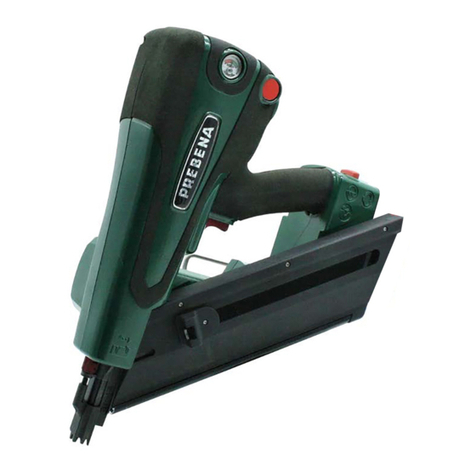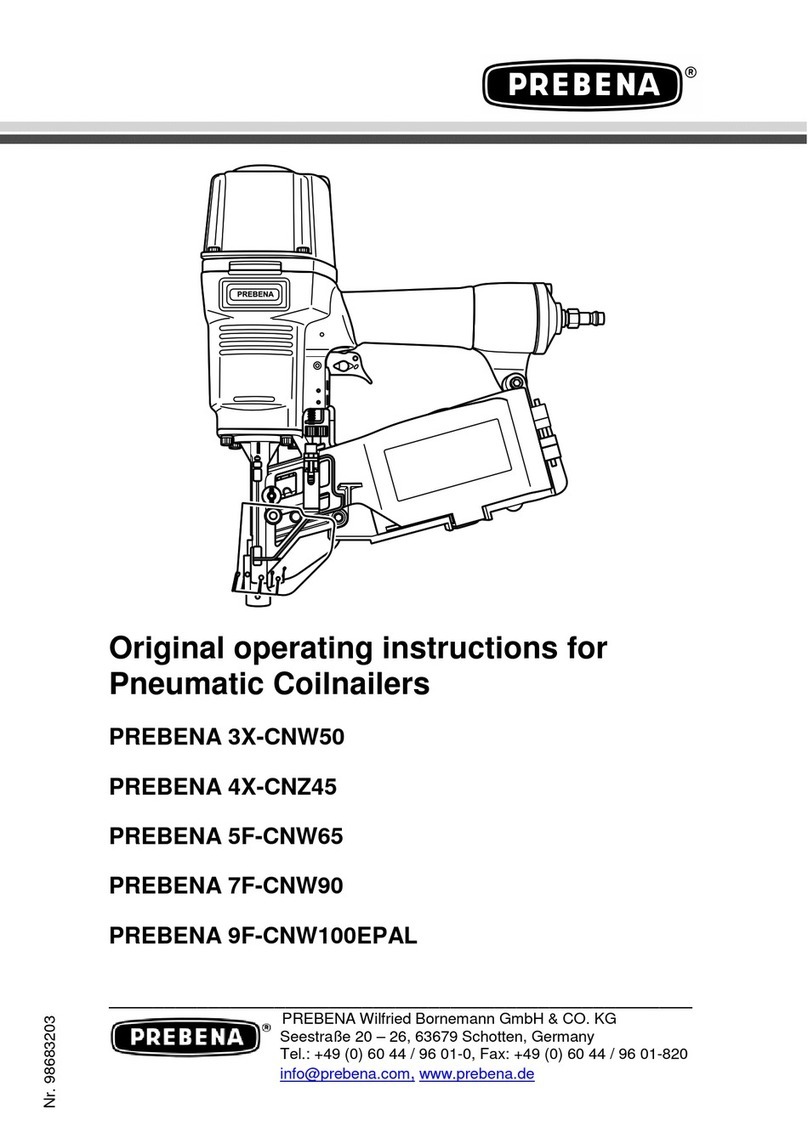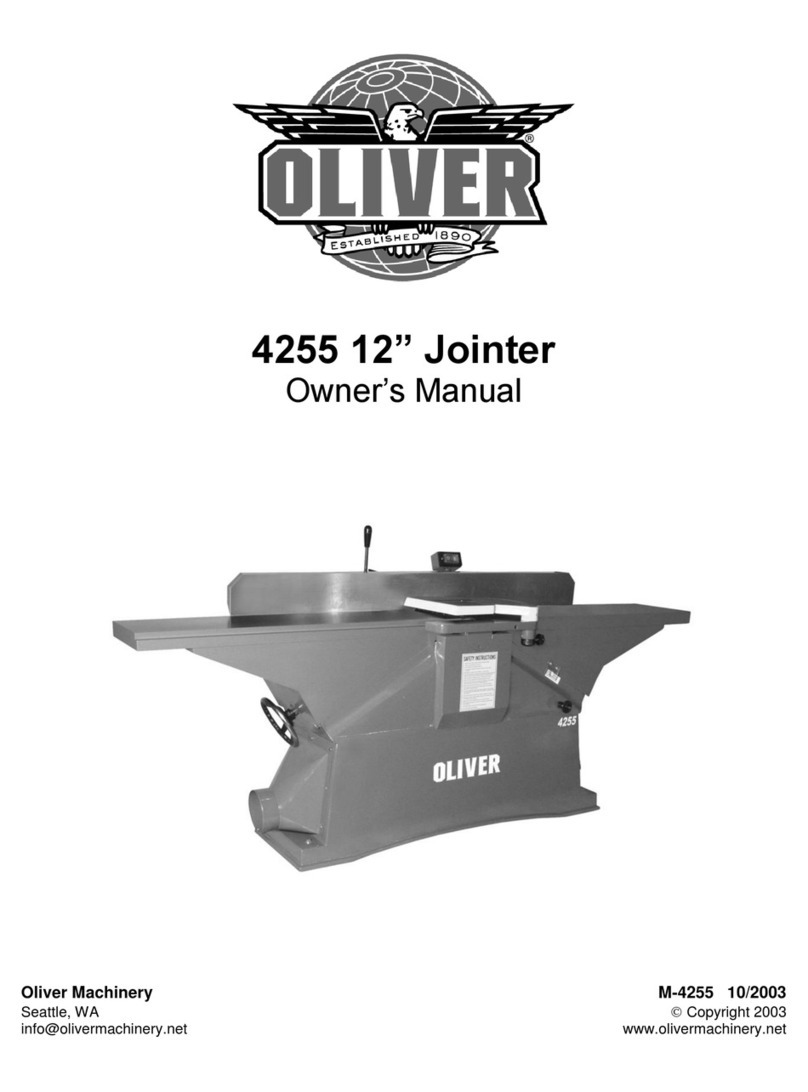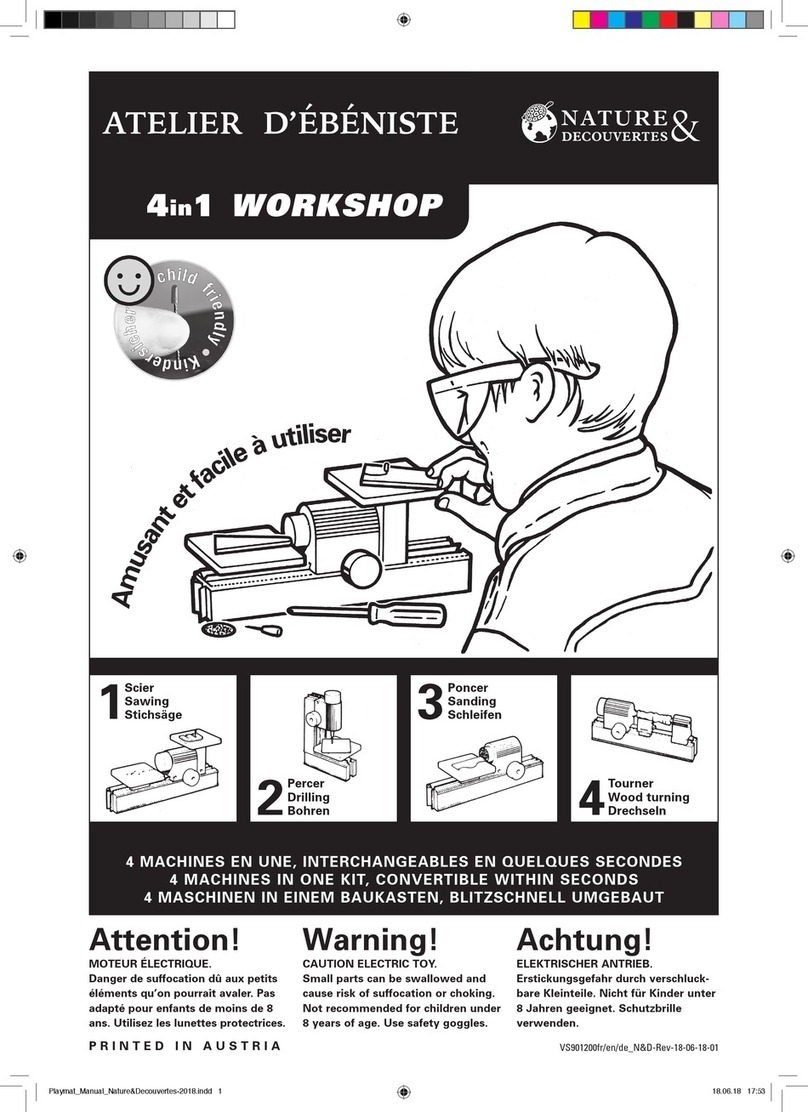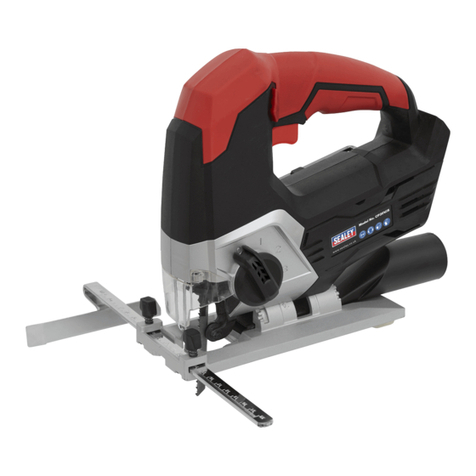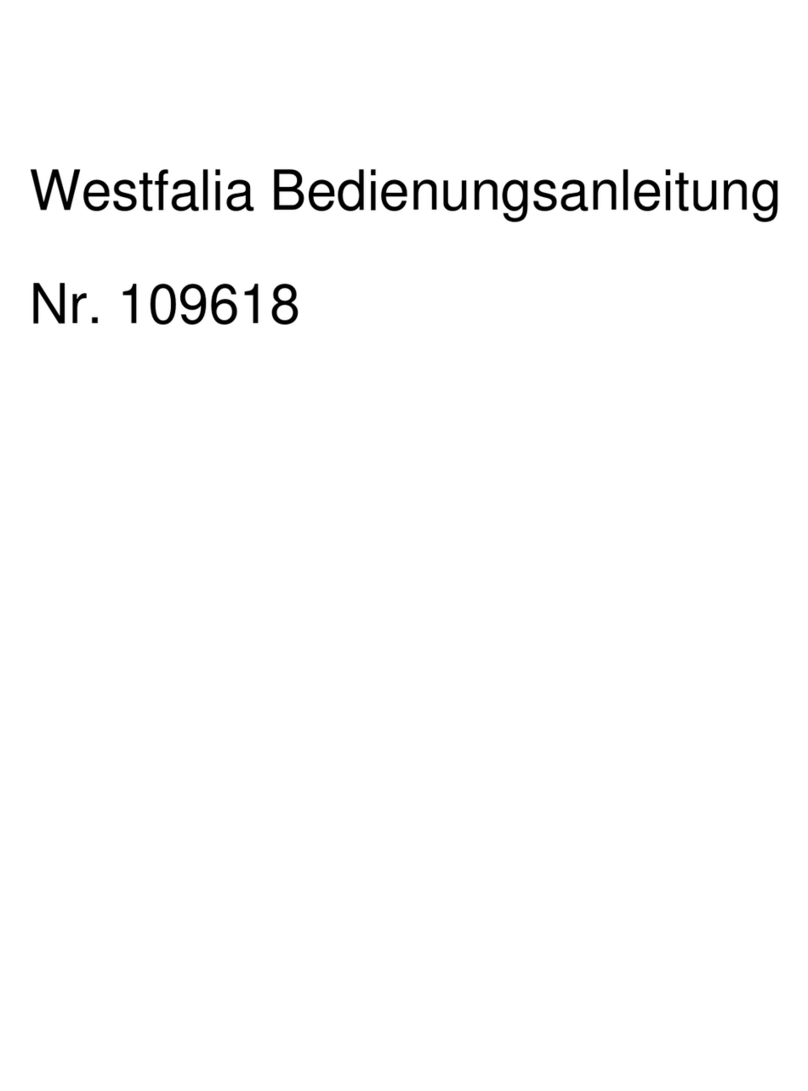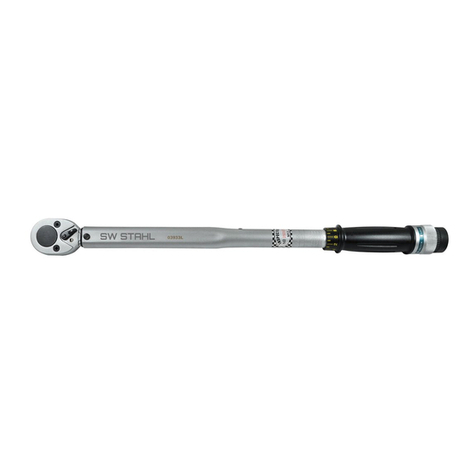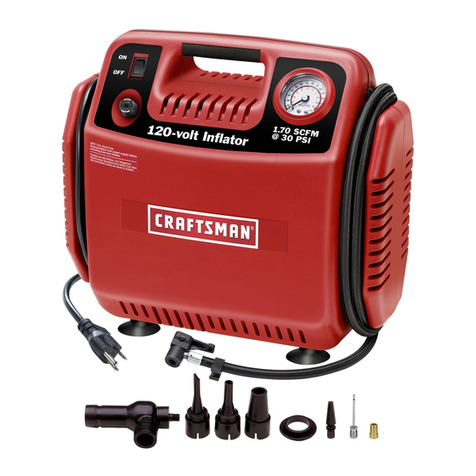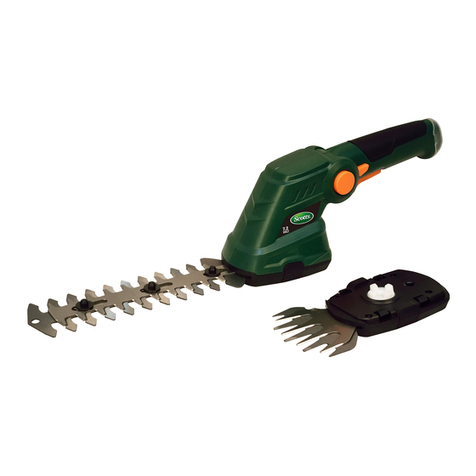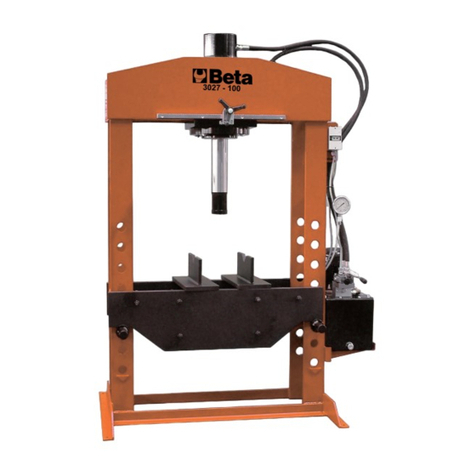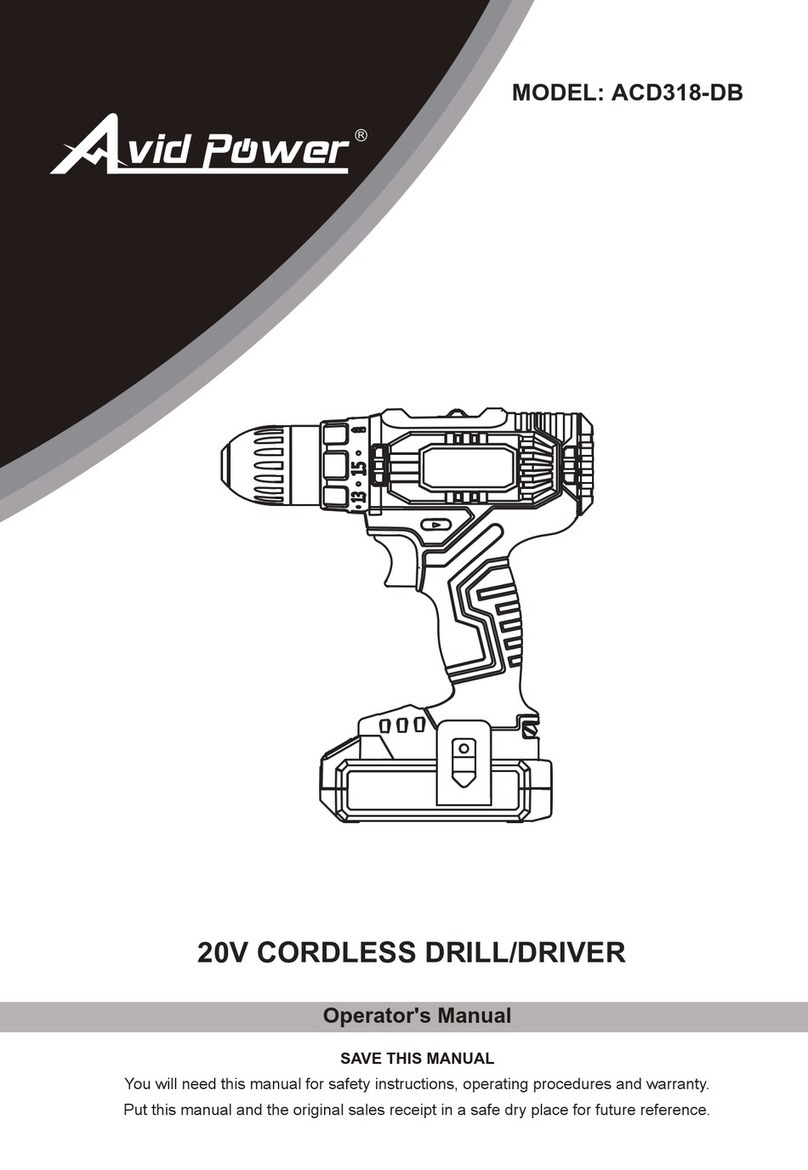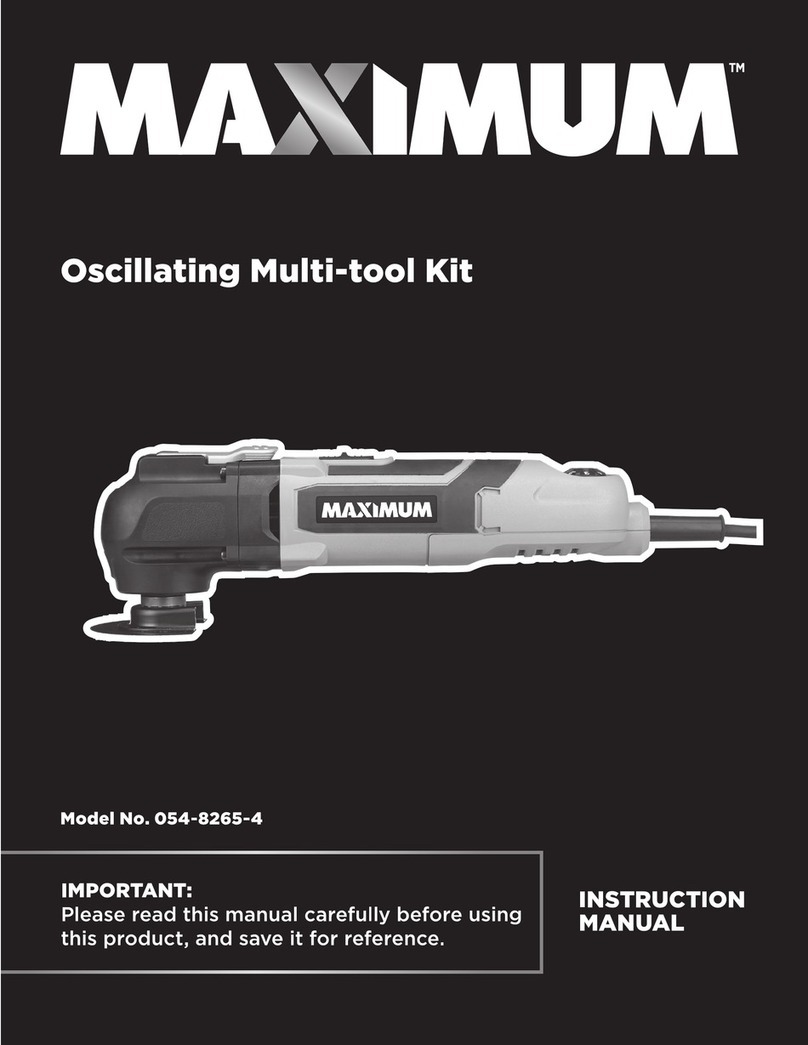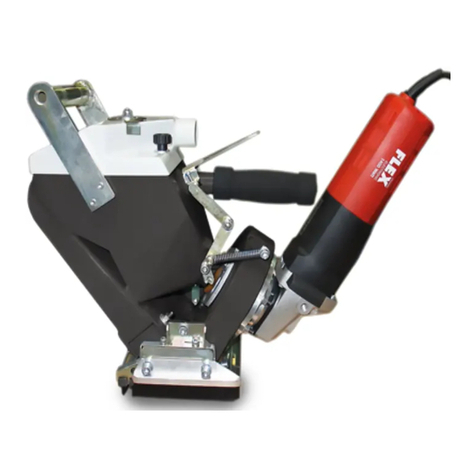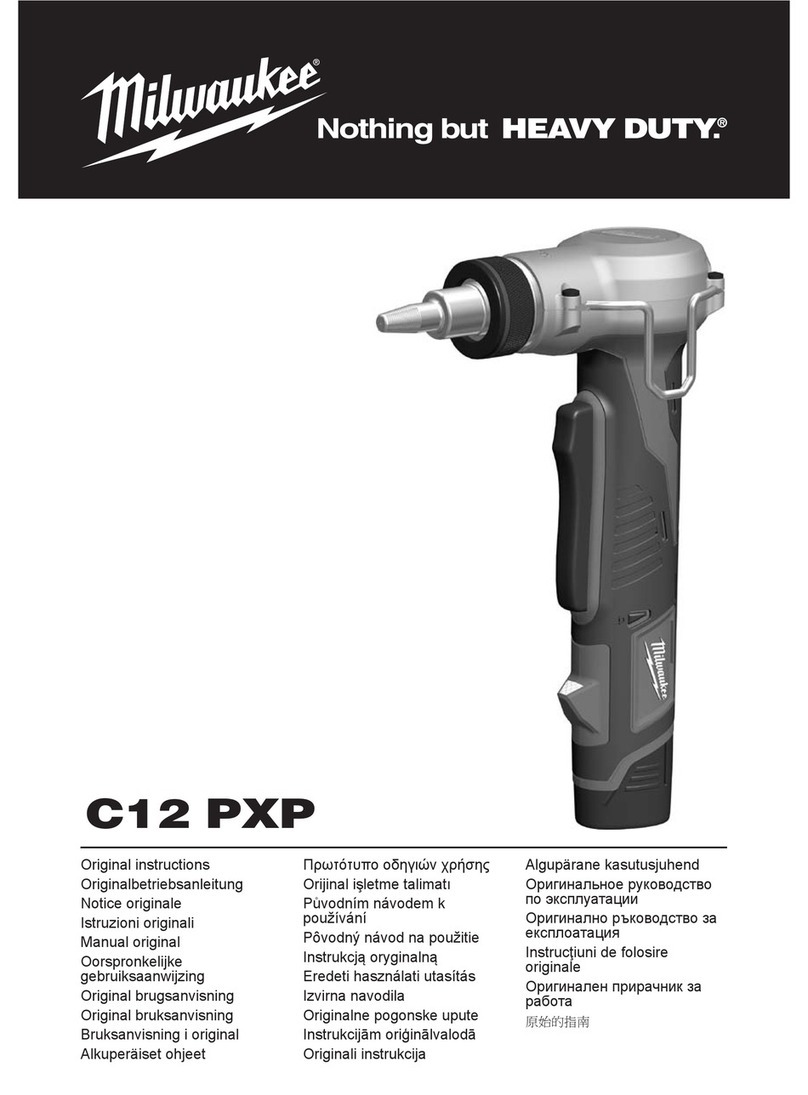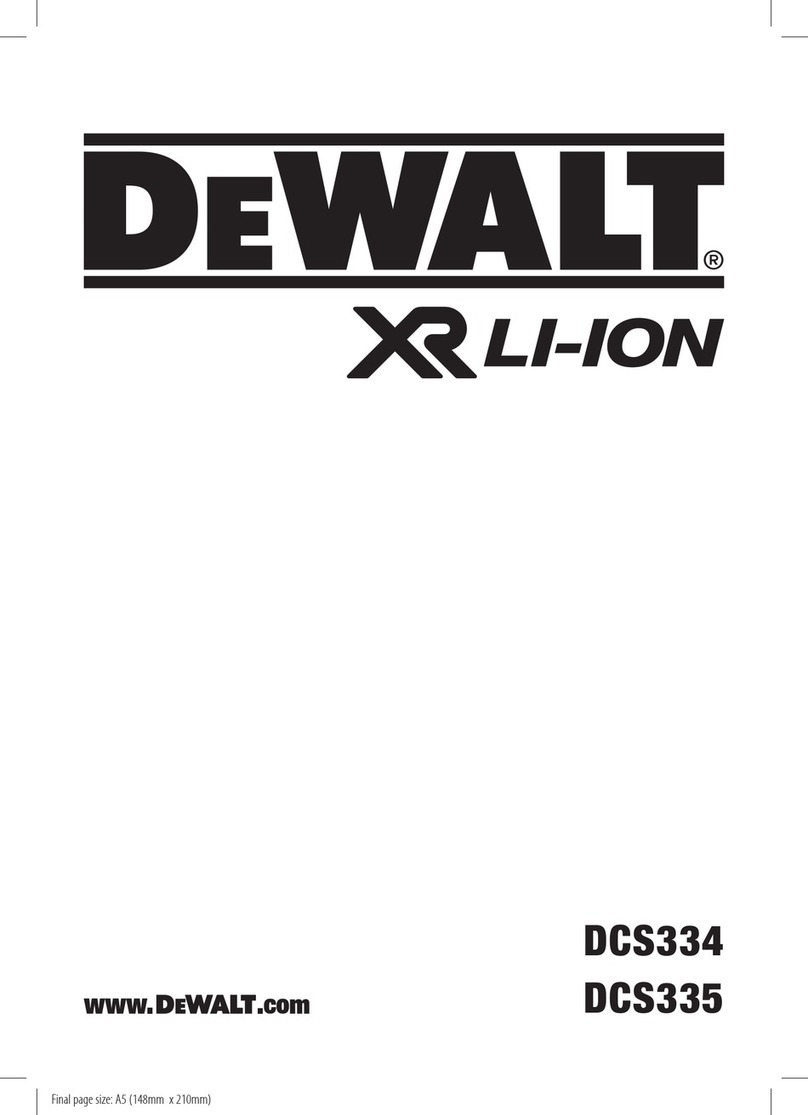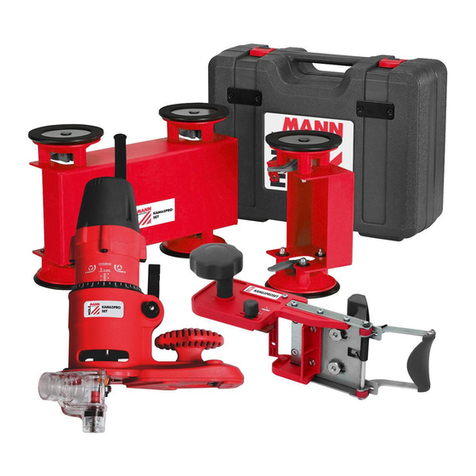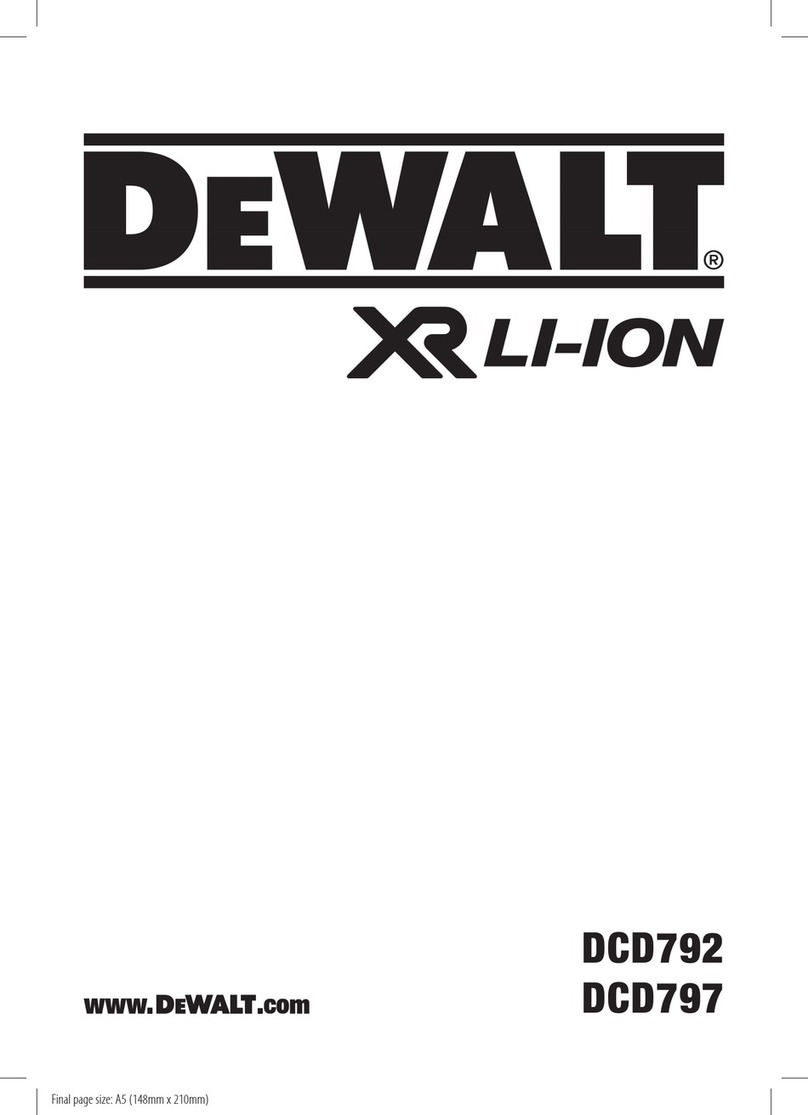Prebena 11-L64 Installation instructions

PREBENA
Wilfried Bornemann GmbH & Co. KG
FASTENING TECHNOLOGY
Wilfried Bornemann GmbH & Co. KG Telefax: +49(0)6044 / 9601-820 www.prebena.de
Seestraße 20-26, D-63679 Schotten
Original operating manual
for stationary, compressed air-operated
industrial staplers
MODULE 11-L64
97556903

Page 2of 30
Introduction
This instruction manual will help you to use the pneumatic MODULE 11-L64 industrial stapler in a
•proper,
•safe and
•economic
manner.
In these operating manual. the MODULE 11-L64 industrial stapler is simply referred to as the stapler.
We assume that every user of the stapler has knowledge of the handling of compressed air-operated
devices and the utilised materials. Persons without this knowledge must be instructed in the
operation of the stapler by an experienced user.
This instruction manual is intended for use by the following persons:
•Persons operating this stapler,
•persons who clean or use this stapler, or
•persons disposing of this stapler.
Each of these persons must have read and understood the contents of this instruction manual.
This instruction manual is an integral component of the product. It must always be kept at the
stapler. Hand over the instruction manual together with the stapler if you sell it or otherwise pass it
on.

Page 3of 30
Contents
Design features........................................................................................................................................5
General design features .......................................................................................................................5
Characteristics of the hazard warnings ................................................................................................5
Characteristics of the notes on damage to property or the environment...........................................5
Safety .......................................................................................................................................................6
Intended use.........................................................................................................................................6
Improper use ........................................................................................................................................6
Avoiding risk of fatal injuries................................................................................................................6
Avoiding risk of explosion.....................................................................................................................6
Avoiding damage to the stapler ...........................................................................................................6
Description...............................................................................................................................................7
Information on the type plate..............................................................................................................8
Preparing the stapler...............................................................................................................................9
Unpacking the stapler...........................................................................................................................9
Checking the condition.........................................................................................................................9
Assembly instructions........................................................................................................................... 10
Assembling the stapler...................................................................................................................... 10
Connecting the stapler to the compressed air supply....................................................................... 10
Connecting the stapler to the control line ........................................................................................ 12
Changing the magazine ..................................................................................................................... 13
Removing the magazine .................................................................................................................... 13
Installing the magazine...................................................................................................................... 14
Operating the stapler ........................................................................................................................... 15
Regulating the stapler with the operating pressure ......................................................................... 15
Servicing the stapler ............................................................................................................................. 16
Cleaning the housing and outer surface............................................................................................ 16
Oiling the stapler ............................................................................................................................... 17
Malfunctions......................................................................................................................................... 18
Malfunction overview ....................................................................................................................... 18
Other malfunctions............................................................................................................................ 19

Page 4of 30
Ordering accessories............................................................................................................................. 20
Fasteners ........................................................................................................................................... 20
Disposing of the stapler........................................................................................................................ 21
Technical details ................................................................................................................................... 22
Manufacturer's address........................................................................................................................ 23
Warranty............................................................................................................................................... 24
Circuit diagrams.................................................................................................................................... 25
Pneumatics diagram.......................................................................................................................... 25
Electrical diagram.............................................................................................................................. 26
Declaration of Incorporation in accordance with 2006/42/EC ........................................................... 27
Appendix to the Declaration of Incorporation .................................................................................... 28
Spare parts list ...................................................................................................................................... 30

Page 5of 30
Design features
General design characteristics
Various elements of the instruction manual are marked with defined design characteristics. These
enable you to easily differentiate between
normal text,
•lists or
➢action steps.
Tips contain additional information such as specific details about using the stapler in an economic
manner.
Characteristics of the hazard warnings
All the hazard warnings in this instruction manual have the same layout. On the left is a symbol
indicating the type of danger. On the right, is another symbol and a signal word describing the source
of the danger and notes on how to avoid it.
DANGER
Notes with the word DANGER warn about hazards that will directly result
in serious or fatal injury.
WARNING
Notes with the word WARNING warn about hazards that could result in
serious or fatal injury.
CAUTION
Warnings with the word CAUTION warn about hazards that could result in
minor to moderate injury.
Characteristics of the notes on damage to property or the environment
IMPORTANT
These notes warn about hazards that could result in damage to property or the environment.

Page 6of 30
Safety
When using the stapler, observe and follow all warnings and instructions in this instruction manual
and on the stapler itself.
Intended use
When using the stapler, observe and follow all warnings and instructions in this instruction manual
and on the stapler itself.
The MODULE 11-L64 stationary stapler is used for driving staples into wooden materials, insulating
material and plasterboard. Use with other materials is only permitted after consultation with the
manufacturer. Intended use also includes compliance with accident prevention regulations and the
statutory regulations and standards applicable at the place of use. Any other use is considered
improper use and may result in material damage or even personal injury.
Improper use
In particular, improper use is considered to be if the stapler is operated
•by persons who are not familiar with the use of staplers and the utilised materials,
•with a bridged circuit breaker,
•after it has been modified by the operator without authorisation,
•using fasteners that do not originate from PREBENA, see page 24.
PREBENA WILFRIED BORNEMANN GMBH & CO. KG will not accept any liability for damage caused as
the result of improper use.
Avoiding risk of fatal injuries
•Connecting the stapler to the regulating and compressed air network is prohibited as long as
the stapler is not connected to the production system in the intended direction of
installation.
•Never point the stapler at people, animals or their body parts.
•Do not allow children to play with packaging film - danger of suffocation.
Avoiding risk of explosion
•Do not use the stapler in potentially explosive environments.
•Never operate the stapler with oxygen or with other ignitable gases or gas mixtures.
•Do not expose the compressor to temperatures above 100 °C.
Avoiding damage to the stapler
•Never open the stapler housing. Always leave repair work to a qualified technician.
•Do not use the stapler if it has been dropped or damaged. Have the stapler checked by a
qualified technician before putting it back into operation.

Page 7of 30
Description

Page 8of 30
No.
Explanation
1
Fastening screw with nut
2
Interchangeable magazine
3
Retaining pawl
4
Sensor; magazine fill level
5
Sensor; feed monitoring
6
Barb; staple reloading channel
7
Barb; staple infeed
8
Venting hole
9
Regulator connection socket
10
Clamping nut
11
Bump stop
12
NW10 compressed air connection
13
Driver
Information on the type plate
The type plate is affixed to the left-hand side of the housing. It contains the following information:
•Company name and country of origin,
•type designation of the stapler,
•type designation of the fasteners to be used.

Page 9of 30
Preparing the stapler
Unpacking the stapler
➢Take the stapler out of its packaging.
➢Remove all packaging material such as plastic film and padding material.
WARNING
Risk of suffocation for children when playing with packaging film.
➢Do not allow children to play with packaging film.
➢Keep packaging material out of the reach of children.
➢Keep the packaging material for future use.
➢Keep the transport case for transporting the stapler.
The stapler may only be transported in the transport case.
Checking the condition
WARNING
Risk of injury when operating a damaged stapler or if the accessories are
not attached properly.
➢Check the condition of the stapler every time before using it.
➢Make sure that the stapler is in a flawless condition.
➢In particular, check the following points:
•The hose line must be undamaged.
•All parts of the stapler and all accessories must be securely fastened.
•The safety mechanisms must not be blocked or otherwise impaired in their
functionality.
•No parts of the stapler or its accessories may display external damage such as
scratches or dents.
Scratches in the paintwork of the housing or magazine are not considered to be
damage.
➢Do not connect a damaged stapler to a compressed air supply.
➢Have a damaged stapler repaired by a qualified technician before putting it into operation.

Page 10 of 30
Assembly Instructions
Assembling the stapler
The assembly procedure can vary on account of the differences in production systems.
CAUTION
When assembling the drive stapler, body parts could get clamped and
crushed between the stapler and the production plant.
➢Have the installation tool ready at hand (ring/open-ended wrench SW24)
➢Place the stapler in the designated assembly position and secure it with the fastening nut and
tool.
➢Tighten the fastening nut to 210 Nm.
➢The height is adjusted on the plant.
Connecting the stapler to the compressed air supply
Only connect the stapler to the compressed air supply after it has been attached to
the production system as described in the installation instructions.
The stapler can be connected to a compressor or a compressed air system.

Page 11 of 30
The stapler may only be operated with a compressor or a compressed air system under the
following conditions:
•The operating pressure of the compressor or compressed air system must not exceed the
maximum operating pressure for the stapler by more than 10%. Information about the
operating pressure for the stapler can be found in this chapter.
•In the case of compressed air systems with a higher pressure, a pressure control valve
(pressure reducer) with a downstream pressure relief valve must be fitted in the
compressed air line.
•The compressed air must be filtered, dry and oiled with PREBENA special nailer oil.
•A compressed air conditioner must be mounted on the coupling side at the outlets for
the compressed air line to the stapler. This should comprise
- a filter,
- a water separator and
- an oiler.
•If an oiler is not installed, the length of the air line to the stapler must not exceed 10m.
Otherwise, two to five drops of PREBENA special nailer oil need to be poured directly
into the air inlet of the stapler every day before putting it into operation.
•The compressed air system must be capable of maintaining the operating pressure even
with the desired air extraction.
•The inside diameter of the air line must be at least 13 mm.
•The connection for the stapler must be fitted with a quick coupling with NW 10 and an
inside diameter of at least 10 mm.
CAUTION
Operating the stapler with compressed air systems that do not meet the
above requirements may cause damage to it.
➢Only operate the stapler with suitable compressed air systems.
➢Only use the stapler if it is in a flawless condition.
➢Check the condition of the stapler.
➢Check the compressed air hose connection for foreign bodies and dirt and clean as necessary.
➢Set the operating pressure at the compressor pressure regulator to 4.5 - 7.5 bar.
WARNING
Unintentionally activating the stapler when connecting it to the
compressed air supply can result in serious or fatal injury.
➢Do not point the stapler at people or animals.
➢Empty the magazine before connecting the stapler.
CAUTION
Damaged hose lines can burst, and the escaping compressed air could
cause material damage.
➢Check the compressed air system and the stapler for material
damage before connecting them.
➢Only connect the stapler to a functioning compressed air system.

Page 12 of 30
Important
Damaged hose lines can burst, and the escaping compressed air could cause material damage.
➢Check the compressed air system and the stapler for damage before connecting them.
➢Only connect the stapler to a functioning compressed air system.
➢Push the quick-release lock (1) of the compressed air hose onto the connection (2) until it
audibly engages.
➢Check the operating pressure indicated on the compressor pressure gauge.
Connecting the stapler to the control line
Only connect the stapler to the compressed air supply after it has been attached to the
production system as described in installation instruction 2.
A 6-pin XLR type connector plug must be used. The pin assignment is described in the chapter
"Circuit diagrams".
WARNING
Defective cable connections and exposed contacts can result in personal
injury and material damage.
➢Check the cable connection for possible damage.
➢Only attach the stapler to a flawless cable connection.
➢Push the connecting cable (1) onto the connection socket (2) until it audibly engages.

Page 13 of 30
Changing the magazine
The magazine is designed as an interchangeable magazine and is not loaded when it is installed on
the stapler. The magazine is detached from the device for reloading so that it can be conveniently
filled with staples at an external station.
The staples are delivered in an industrial packaging for quick and easy charging of the magazines.
Removing the magazine
Turn the retaining pawl (4) in the direction of the arrow and pull the magazine (1) backwards off the
stapler.

Page 14 of 30
Installing the magazine
Attach the magazine in the reverse manner to removing it. Make sure that the guide rails do not
twist when inserting the magazine. Also make sure that the retaining pawl (4) is fully engaged by the
spring force. Push the magazine up to the stop buffer by exerting slight pressure on it. If this does not
work, loosen the lock nut (3) and readjust the position of the stop buffer with the thread. Then
tighten the nut again.
The procedure for changing the magazine is the same for all magazine types.
Which magazines can be used are shown in the overview below:
Magazine design
PREBENA staples
Type L35
L35
Type L38
L38
Type L40
L40
Type L44
L44
Type L50
L50
Type L55
L55
Type L63
L63

Page 15 of 30
Operating the stapler
Regulating the stapler with the operating pressure
You can set the penetration depth of the stapler into the material by regulating the operating
pressure. At a higher operating pressure, the fasteners are driven deeper into the material; setting a
lower operating pressure reduces the penetration depth.
Set the operating pressure to achieve the required penetration depth. This has the
following benefits:
•You save energy (compressed air),
•you reduce the noise level, and
•you reduce the wear of the stapler.
Proceed as follows to set the operating pressure:
➢Adjust the pressure at the pressure valve of the compressor or compressed air system.
➢Observe the pressure reading.
Checking the penetration depth
➢Shoot a staple into a sample workpiece with the same characteristics as the processing
material.
➢Repeat these steps until you have set the required penetration depth.

Page 16 of 30
Servicing the stapler
The stapler may only be serviced by persons who have the necessary knowledge, skills and
experience. Any work not described here may only be performed by the manufacturer's customer
service team or by the manufacturer.
During all servicing work, the compressed air connection and the control line between
the stapler and the production system must be disconnected.
WARNING
Unintentionally activating the stapler when emptying the magazine can
result in serious or fatal injury.
➢Disconnect the stapler from the compressed air supply before
cleaning it.
➢Remove the magazine and all staples from the feed channel and
on feed bridge.
Cleaning the housing and outer surface
Important
The stapler or accessories can be damaged by using unsuitable cleaning agents.
➢Only use a dry, slightly moistened cloth or a cloth moistened with mild soapy water for
cleaning the stapler.
Light soiling
➢Wipe the stapler housing clean with a dry cloth.
Severe soiling
➢Wipe the stapler housing clean with a cloth lightly moistened with mild soapy water.
➢Then wipe the housing with a cloth slightly moistened with tap water.
➢Rub down with a dry, soft cloth.
Soiling in the discharge channel/feed bridge
The discharge channel and feed bridge should be cleaned at regular intervals depending
on the discharge intensity.
Use of the staples can cause adhesive residue to accumulate in the discharge channel and on the
feed bridge.
➢Remove this residue using a compressed air gun and a fine cleaning brush.

Page 17 of 30
Oiling the stapler
Important
Inadequate lubrication or using incorrect lubricants can cause damage to the stapler.
➢Only use PREBENA special nailer oil.
If an oiler is not fitted and the length of the air line to the stapler exceeds 10 m, adequate
lubrication cannot be assured.
➢In this case, pour two to five drops of PREBENA special nailer oil directly into the connection
for the compressed air source every day before putting the stapler into operation.

Page 18 of 30
Malfunctions
WARNING
Operating a damaged or malfunctioning stapler can result in serious or
fatal injury.
➢In the event of a malfunction, immediately disconnect the stapler
from the compressed air supply.
➢Remove the magazine and all staples from the feed channel and
on feed bridge.
➢Do not use the stapler until the malfunction has been remedied.
Important
The stapler can be damaged by repairs undertaken by unauthorised persons.
➢Make sure that the stapler is only repaired by the manufacturer.
Malfunction overview
Possible malfunctions and the necessary measures are listed in the overview below.
Symptom
Possible cause
Remedy
Stapler is losing
air.
Fastening screws have
become loose.
Notify customer service.
A seal is defective.
Notify customer service.
Operating
pressure too high.
Valve defective.
Immediately disconnect the stapler from
the compressed air supply.
Notify customer service.
Operating pressure set too
high or stapler damaged.
Reduce operating pressure.
If the problem persists:
Immediately disconnect the stapler from
the compressed air hose.
Notify customer service.
Fasteners are not
being fully driven
in.
The operating pressure is too
low.
Increase operating pressure.
The driver tip on the stapler is
worn/broken
Notify customer service.
Staples cannot be
discharged.
The operating pressure is too
low.
Increase the operating pressure of the
compressed air system to the maximum
permissible level.
The moving parts are stuck
together with lubricant after
long storage.
Clean stapler.
Set maximum operating pressure.
Perform test discharges.
When staples are discharged,
set the required operating pressure.
Otherwise notify customer service.
Discharge is
triggered without
Feed bridge/channel is soiled.
Clean feed bridge/channel.
Incorrect fasteners have been
loaded.
Remove fasteners.
Fill stapler with PREBENA fasteners.

Page 19 of 30
a fastener being
driven in.
The stapler is not adequately
lubricated.
Fill PREBENA special nailer oil into the used
compressed air connection.
Fire a test discharge.
The operating pressure is too
low.
Increase operating pressure.
The piston with the driver
does not return to the home
position after the driving-in
action.
Notify customer service.
The triggering action is not
completed.
Notify customer service.
The driver is bent.
Notify customer service.
The reloading
cycle is
interrupted.
Passage of the throttle valves
has changed.
Notify customer service.
Fastener has become wedged
during reloading.
Disconnect stapler from the compressed air
supply.
Remove fasteners from reloading opening.
Load new fasteners and fire a test
discharge.
Other malfunctions
If other malfunctions of the stapler have occurred which cannot be remedied by oiling and cleaning
it, you must notify the PREBENA service team.
➢Do not carry out any repair work on the stapler.
➢Make sure that all malfunctions of the stapler are remedied by the PREBENA service team.

Page 20 of 30
Ordering accessories
Accessories can be ordered from the manufacturer. Only use original PREBENA accessories, or
accessories that have been approved by PREBENA, to operate the stapler.
Product no.
Accessories
Z200.10
Special oil for compressed air nailers 1/2 litre
Z200.00
Small mist oiler
62151004
Interchangeable magazine for HK type L35
62152402
Interchangeable magazine for HK type L38
62152203
Interchangeable magazine for HK type L44
62151105
Interchangeable magazine for HK type L50
62151204
Interchangeable magazine for HK type L55
62152501
Interchangeable magazine for HK type L63
62752602
Spare part set (listing see attachment)
Ordering additional fasteners
The stapler may only be used with the respective PREBENA staples shown on the type plate.
Type
Length
Wire size
Spine width
L35 CNKHA
CSVHA-ETA
CRFHA-ETA
35 mm
1.39 x 1.58 mm
10.7 mm
L38 CNKHA
CSVHA-ETA
CRFHA-ETA
38 mm
1.39 x 1.58 mm
10.7 mm
L40 CNKHA
CSVHA-ETA
CRFHA-ETA
40 mm
1.39 x 1.58 mm
10.7 mm
L44 CNKHA
CSVHA-ETA
CRFHA-ETA
44 mm
1.39 x 1.58 mm
10.7 mm
L50 CNKHA
CSVHA-ETA
CRFHA-ETA
50 mm
1.39 x 1.58 mm
10.7 mm
L55 CNKHA
CSVHA-ETA
CRFHA-ETA
55 mm
1.39 x 1.58 mm
10.7 mm
L63 CNKHA
CSVHA-ETA
CRFHA-ETA
63 mm
1.39 x 1.58 mm
10.7 mm
Table of contents
Other Prebena Power Tools manuals
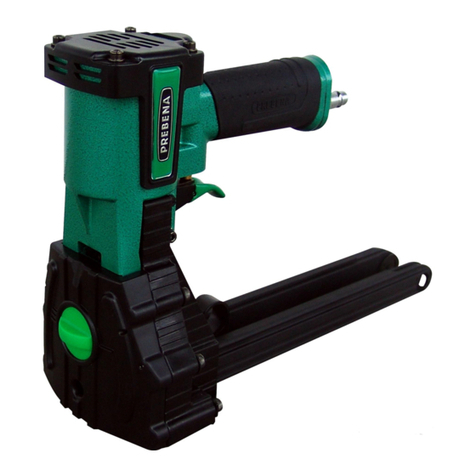
Prebena
Prebena KTVH-B19D User manual
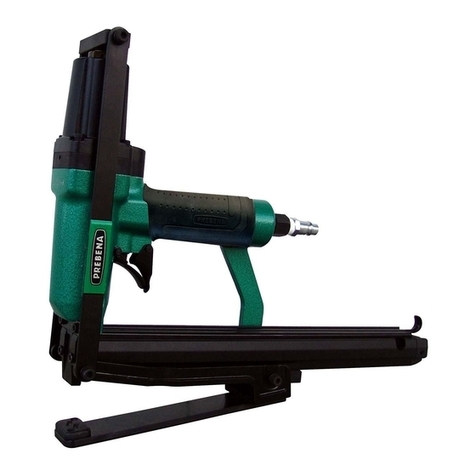
Prebena
Prebena 1A-AZ16BNH User manual

Prebena
Prebena KTVH-B19D User manual
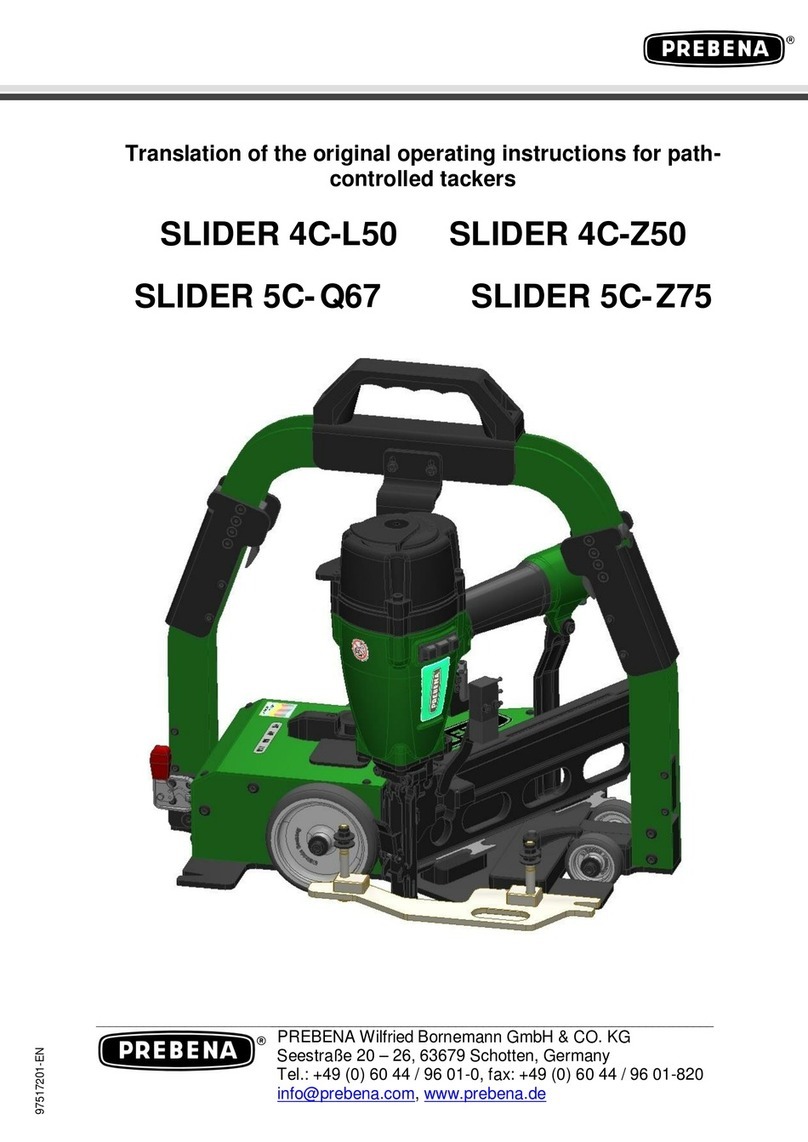
Prebena
Prebena SLIDER 4C-Z50 User manual
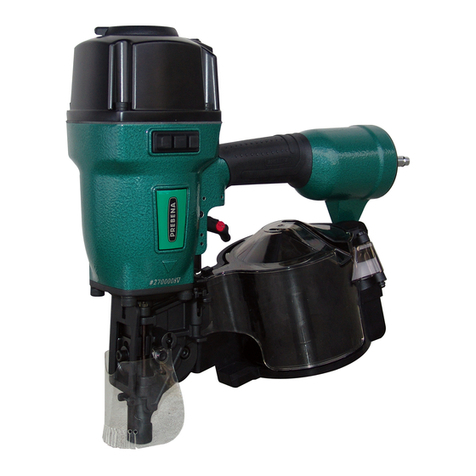
Prebena
Prebena 3X-CNW50 User manual
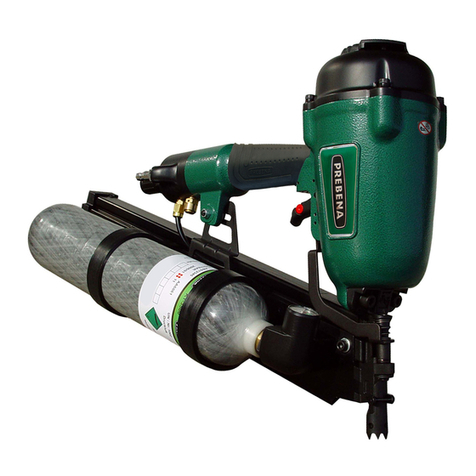
Prebena
Prebena PKT-7-RK90 Installation instructions
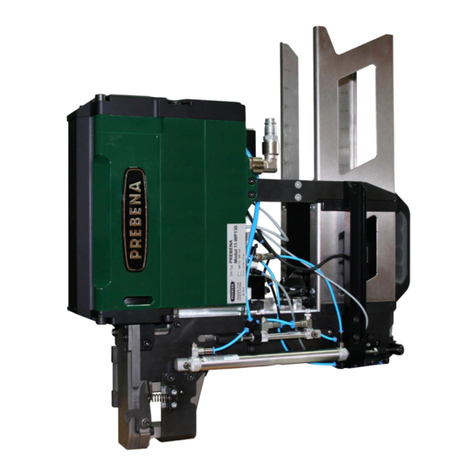
Prebena
Prebena 11-WP130 User manual
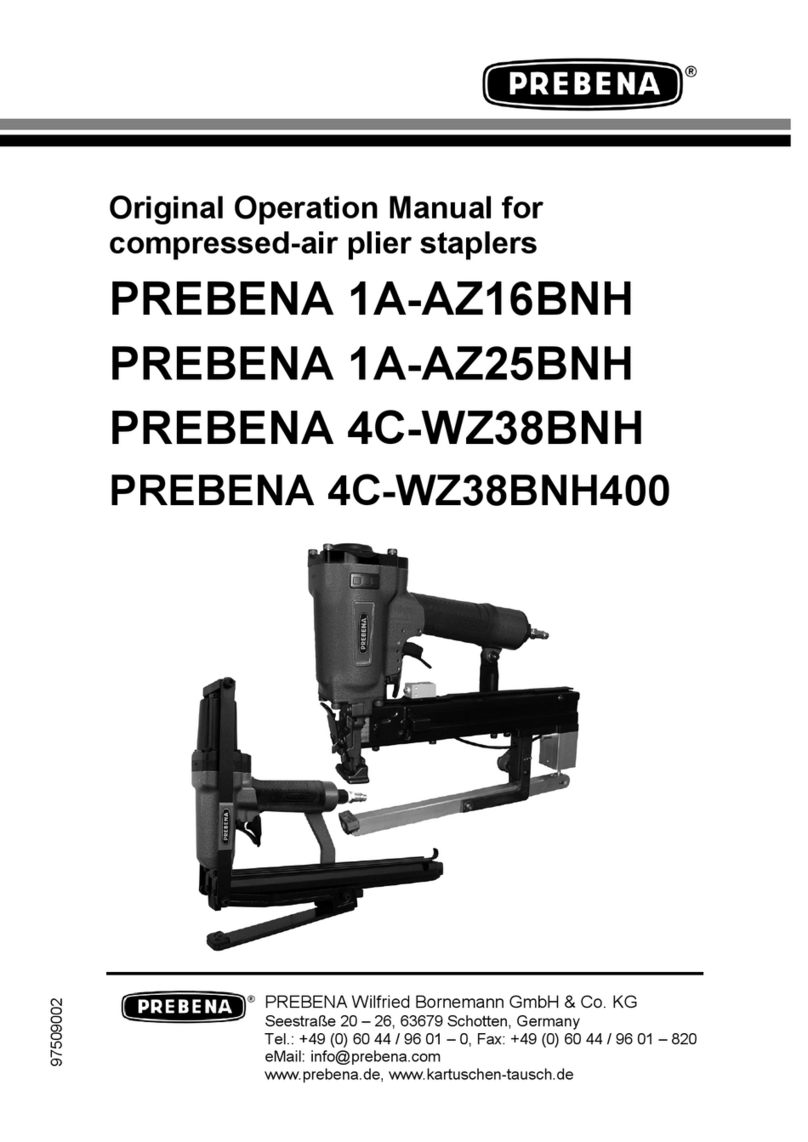
Prebena
Prebena 1A-AZ16BNH Quick start guide
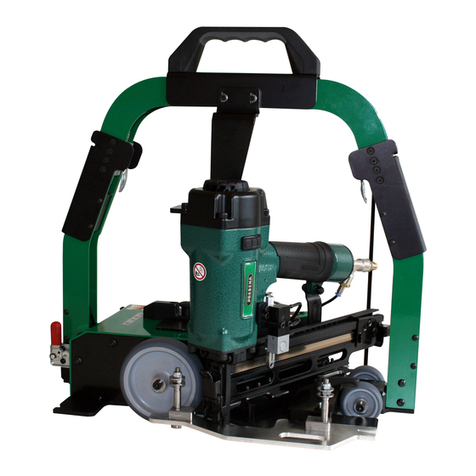
Prebena
Prebena SLIDER 4C-Z50 Quick start guide
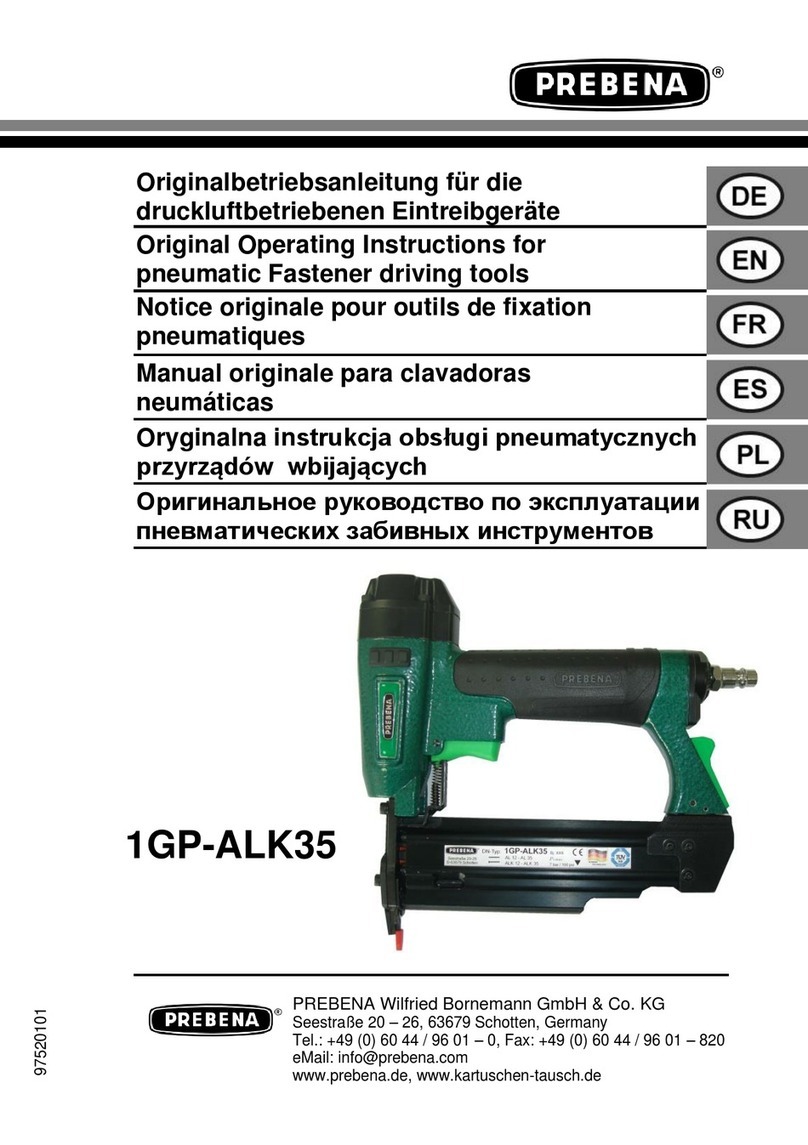
Prebena
Prebena 1GP-ALK35 User manual
